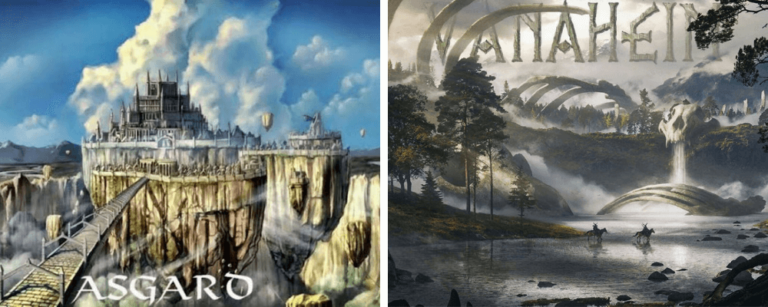According to the Poetic Edda, Vanaheim is one of the nine realms within the Norse cosmos tucked into the branches of Yggdrasil and is the world of the Vanir gods.
The Vanir are a second tribe of gods within Norse mythology that exist alongside the Aesir of Asgard.
But how exactly do these “other” deities function alongside the principal Viking gods within Norse mythology? Let’s take a look at the evidence.
Vanaheim
According to Norse mythology, there are nine realms within the cosmos (see our full post on the 9 worlds). Each of these realms is held within the roots and branches of the mighty world tree Yggdrasil, and each world is the domain of a different race of beings.
- Asgard is the realm of the Aesir gods
- Midgard is the realm of men
- Jotunheim is the home of the giants
- Helheim is the realm of Hel and the dead
- Alfheim is the realm of the light elves
- Svartalfheim is the realm of the dwarves (also known as the dark elves)
- Muspelheim is the realm of the fire giants
- Niflheim is the realm of the ice giants
And Vanaheim is the realm of the Vanir gods.
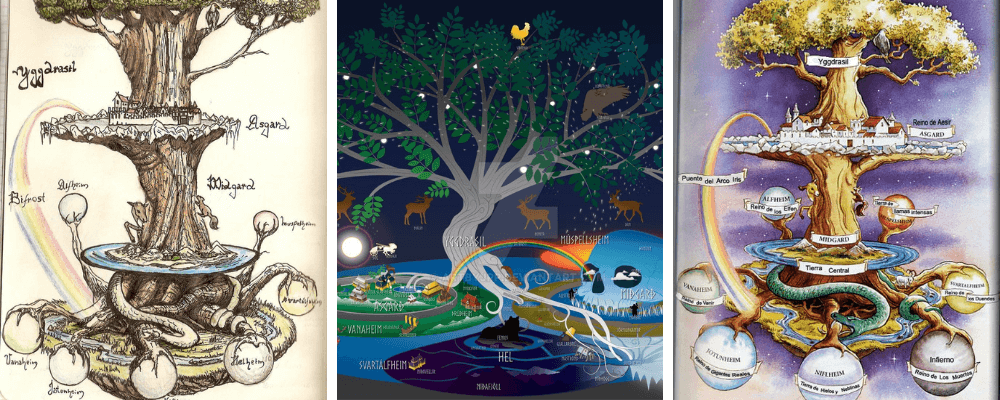
As is the case with most of these realms, we have no clear idea of where they sit geographically within Yggdrasil (the tree of life according to our previous post), and also no idea if this was something that the Vikings themselves knew, or if pinning down the finer points of this geography was important to them (or if this is purely a modern fascination).
From the evidence that does exist we can say that the famous Asgard is probably among the highest branches of the tree, Helheim down at the roots, and Midgard somewhere in the middle.
But what exactly this configuration looks like and where all the other worlds sit is mostly speculation.
The one piece of evidence that we have about the location of Vanaheim is that it is west of Asgard. In the Lokassena, Loki states that the god Njord, one of the Vanir, had to sail east to arrive in Asgard when he was sent there after the Aesir-Vanir war.
The other thing to note is that there are two classes of worlds within the Norse cosmos, the “gard” worlds and the “heim” worlds. The word ending seems to distinguish between worlds that are “inside” and “outside”.
This interpretation can be literal, as we know that both Asgard and Midgard have walled fortifications. But it may also be metaphorical. Worlds within the ordered universe created and protected by the Aesir gods, and worlds beyond this realm of influence and protection.
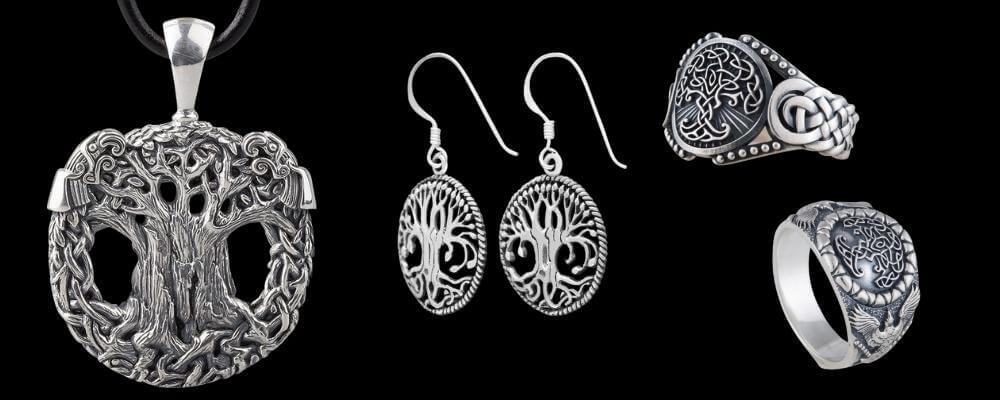
The Aesir-Vanir War
It is recorded that the Aesir and the Vanir gods warred at some point during Norse mythology, at a time after the walls of Asgard were built to protect the realm of the Aesir from external forces.
We know this because the Vanir are described as breaking the defenses of the Asgard and being indomitable in the field.
The source of the conflict between the two races of gods seems to have been differing attitudes towards social rules.
The Aesir gods seem to have believed in a relatively strict world order of law and rule. Meanwhile, the Vanir seem to have had a more easy-going attitude.
The only specific example that we have of this relates to marriage between brother and sister, which seems to have been common among the Vanir, but forbidden among the Aesir.
The Vanir god Njord was married to his (unnamed) sister, with whom he had two children Freyr and Freya, who were in turn married to one another.
When the Aesir-Vanir war ended, Njord, Freyr, and Freya were all sent to Asgard as hostages. While they were welcomed by the Aesir and treated as their equals, the marriages of both Njord, god of sea and his sister and Freyr and Freya were annulled, and each of the Vanir betrothed to another.
The Aesir also sent hostages to Vanir, the gods Hoenir and Mimir, sent because the Vanir requested the wisest of the Aesir.
Apparently, the Vanir immediately made Hoenir their ruler, but they were disappointed with him, as whenever he was asked to make a decision, he said that it was best to leave it to others. In retaliation, they cut off Mimir’s head and sent it to the Aesir.
Considering this, it is a bit surprising that the peace treaty lasted, but it seems that it did.
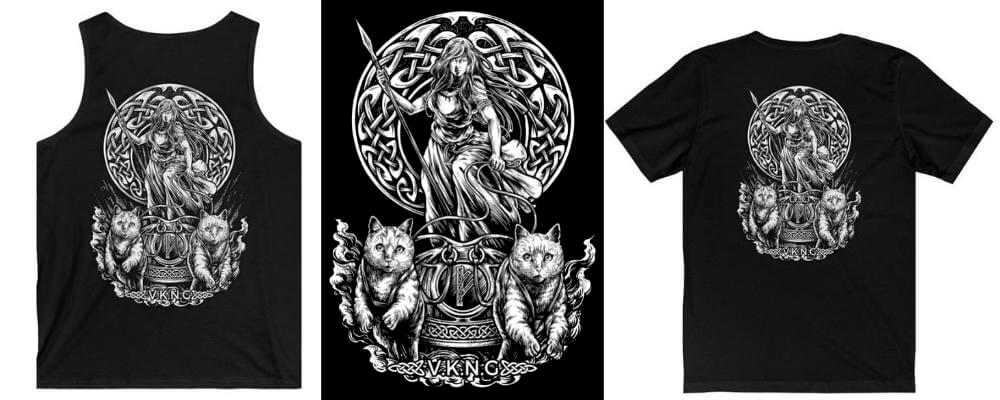
The Vanir Gods
We already know some of the gods that number among the Vanir.
- Njord, the god of wind and water, sailors and fisherman
- Freyr, a god of fertility rain and sunshine
- Freya, a goddess of love, fertility, and Seidr magic
It is possible to see a difference between the Vanir and the Aesir gods, whose realms were war, wisdom, justice, and the household, though, of course, Thor was also the god of thunder.
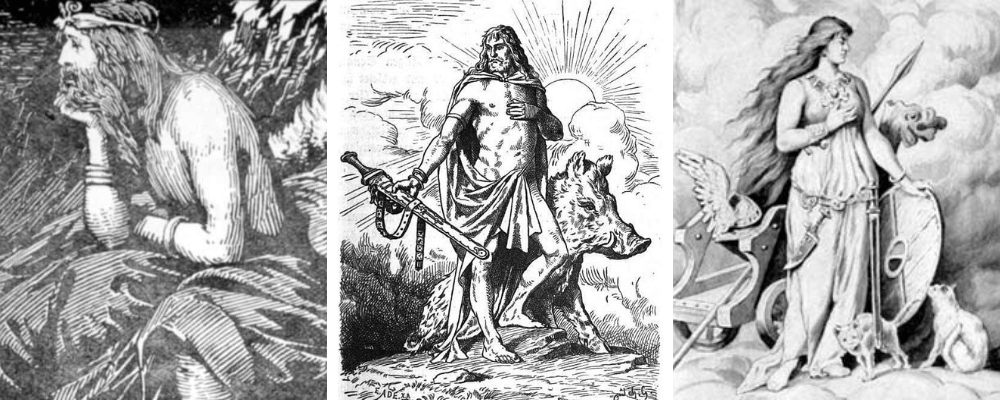
The Vanir seem to be more associated with the natural world, while the Aesir are associated with social order and functions.
Moreover, the Vanir are associated with the esoteric. One source says that it is only the Vanir gods that can see the future. Another source suggests that it was Freya that taught the Aesir gods the art of Seidr magic, and that Odin only became an expert in the art following Freya’s instruction.
It is for this reason that one poem suggests that Heimdall was one of the Vanir, as he possesses the gift of foresight, as only the Vanir can.
But it is probably neither necessary nor useful to try and draw clean lines between which deities were Vanir and which were Aesir, as intermarriage between them was probably common, blurring those lines.
We already see the same thing with the Aesir and the Jotun, with many gods, including Thor himself, being half Jotun.
What Do You Think?
What do you think of the role of the Vanir gods within Norse mythology and Viking beliefs? Do you think that the Vikings distinguished between the Aesir and Vanir when making their offerings?

